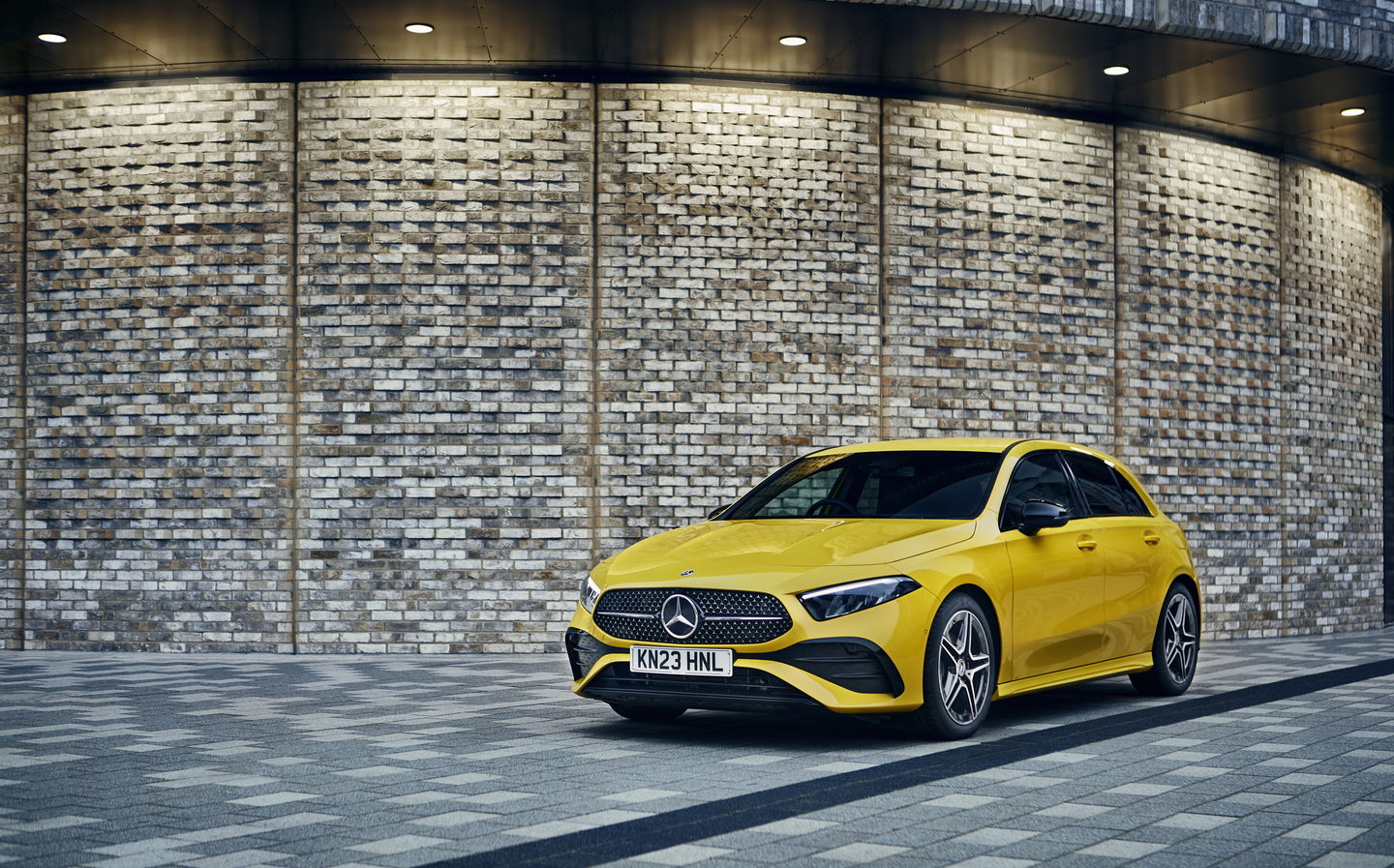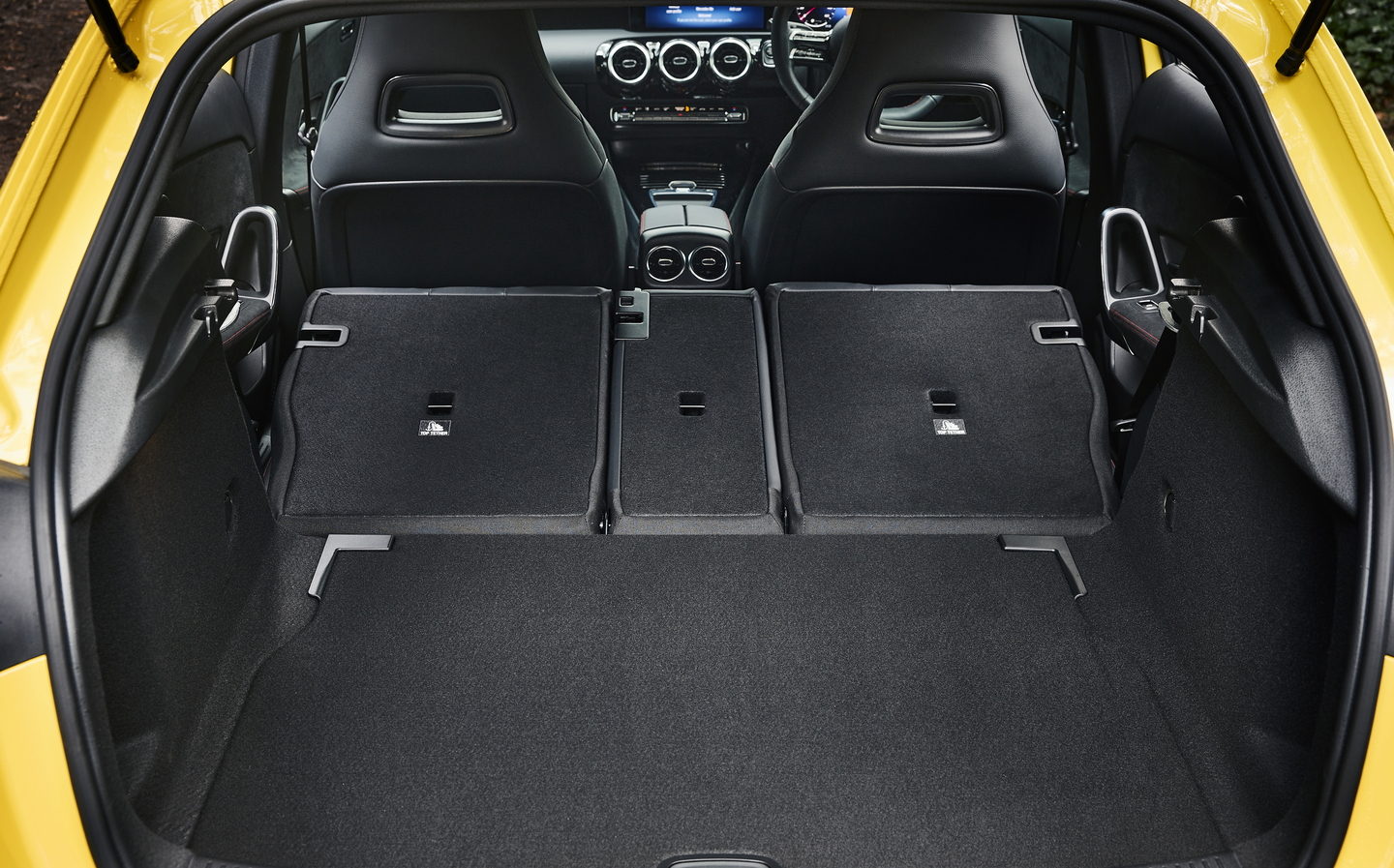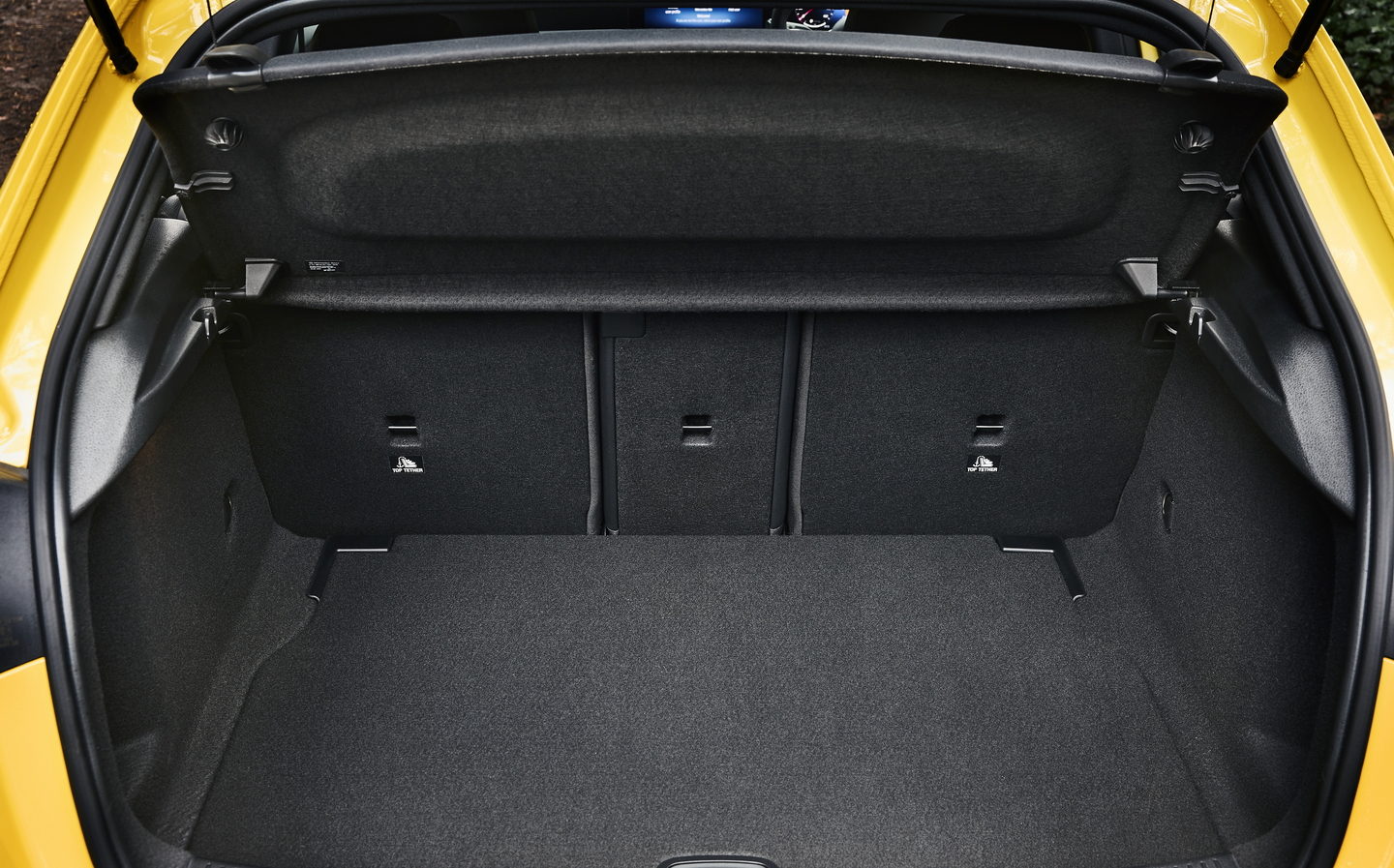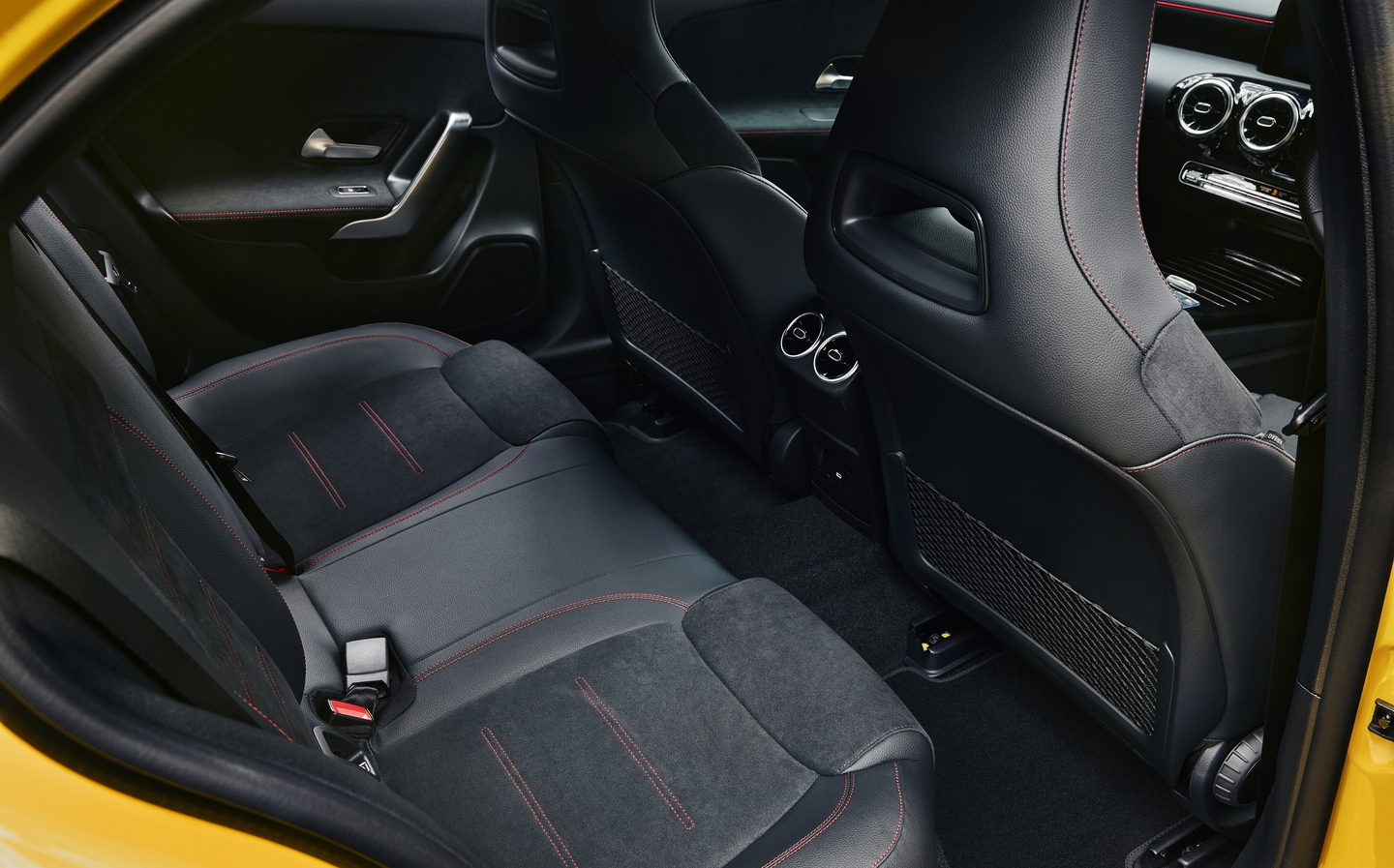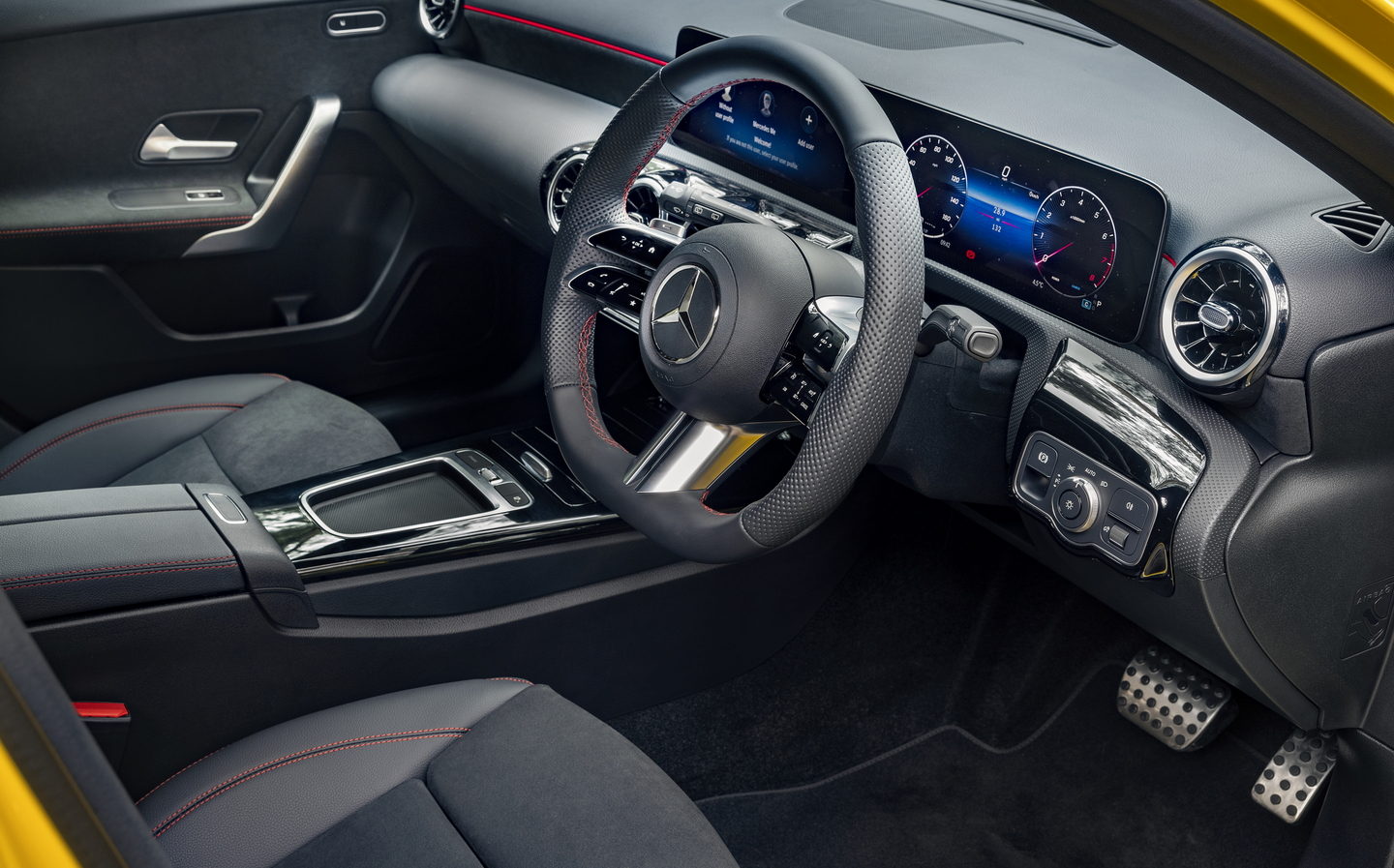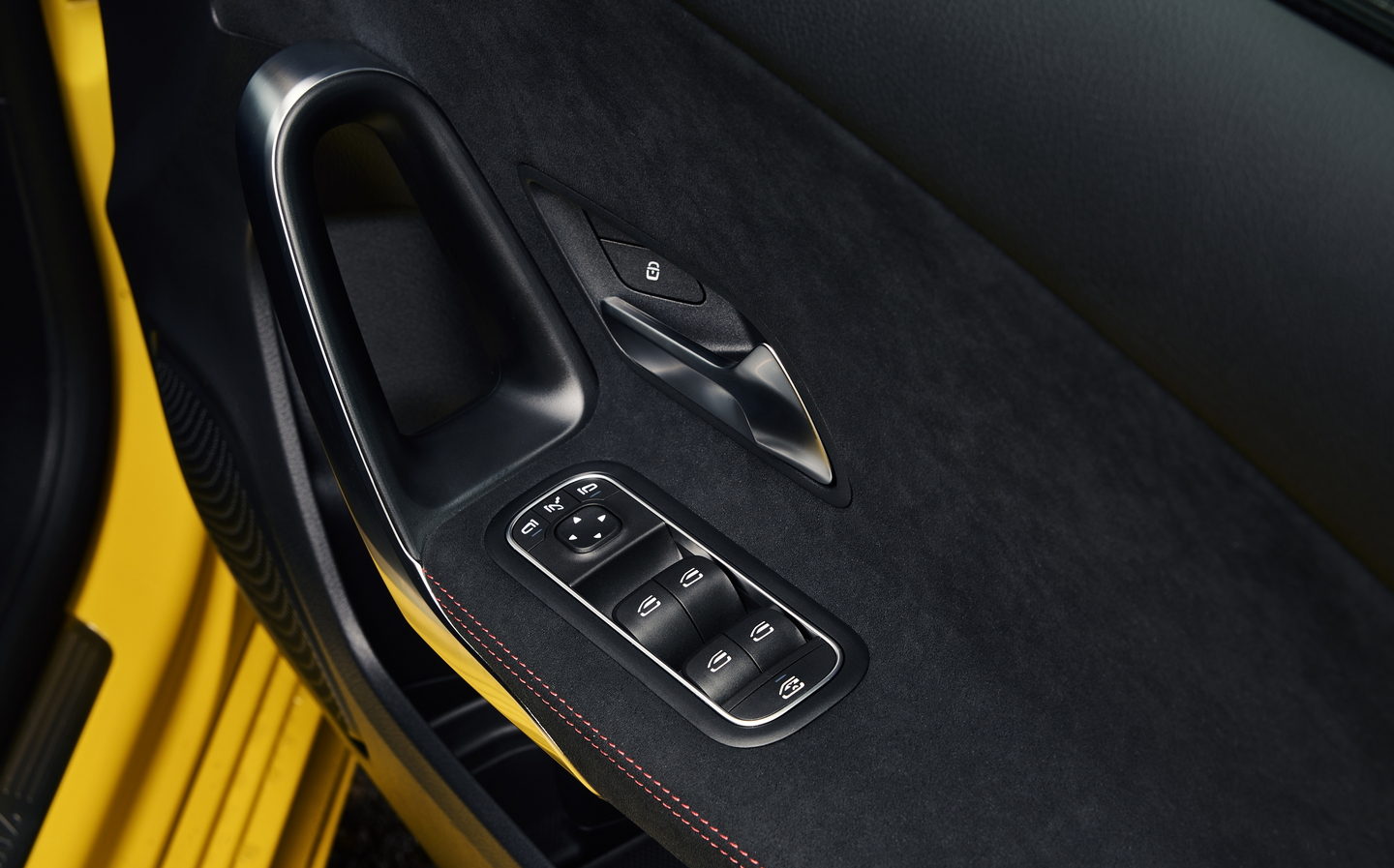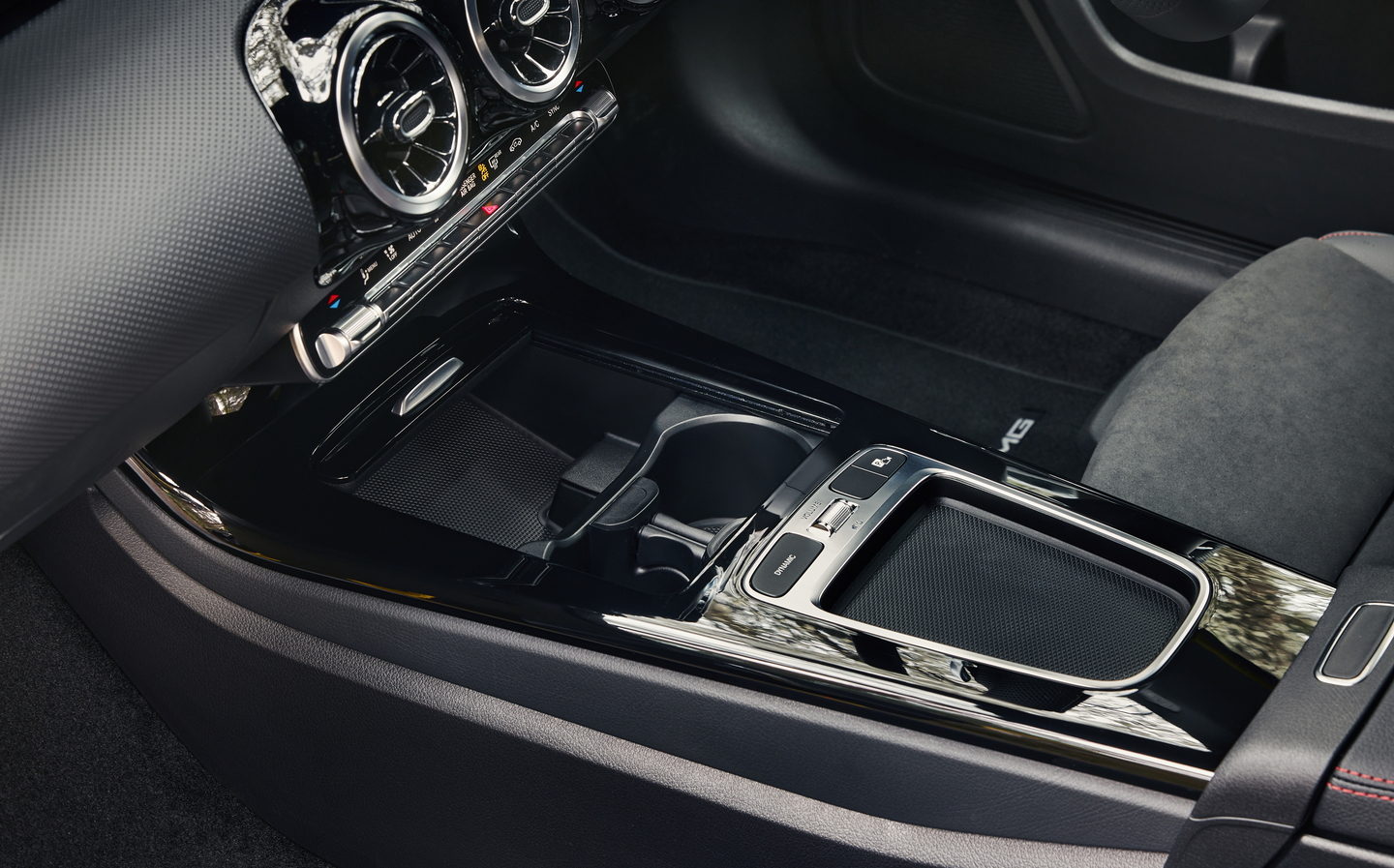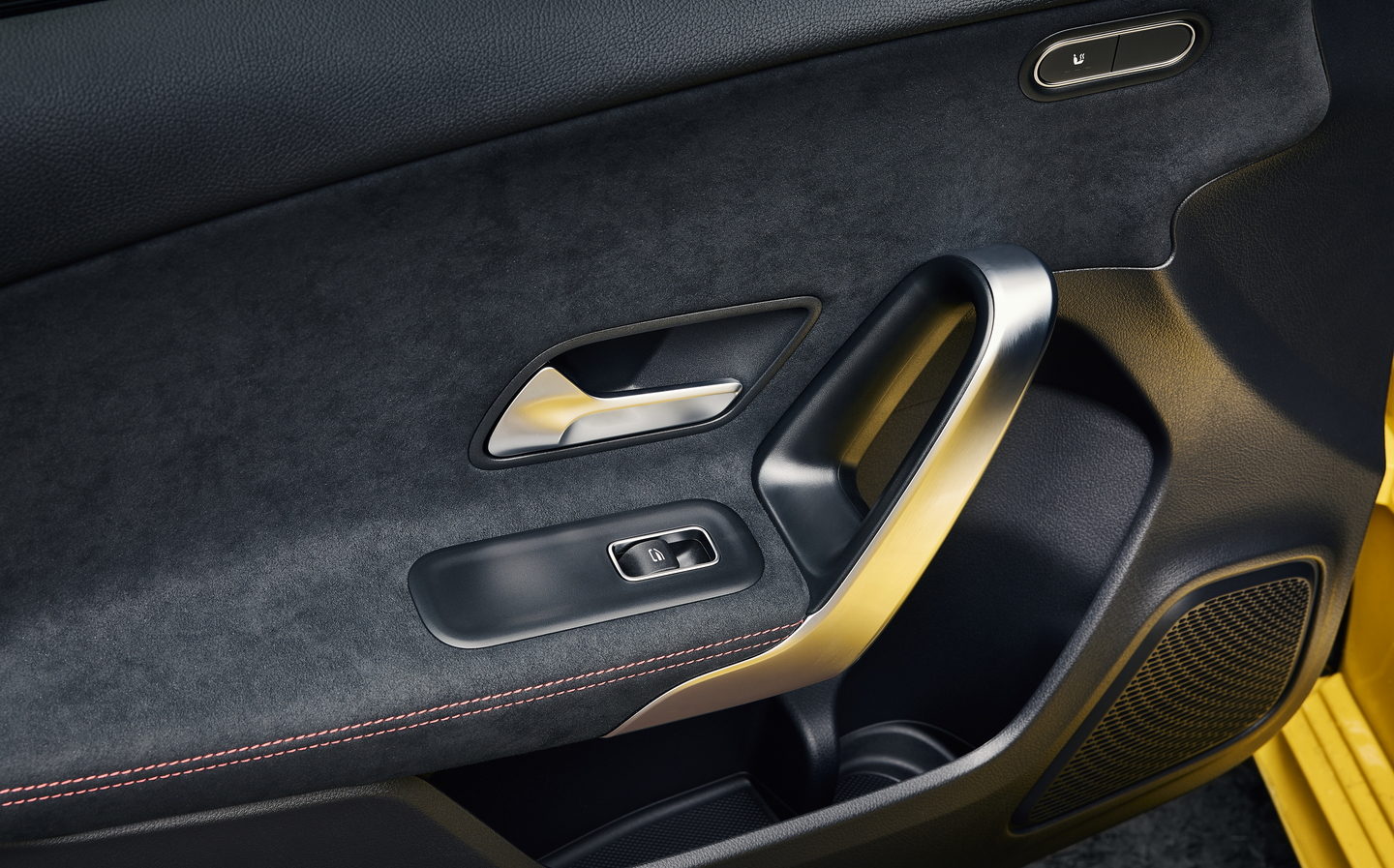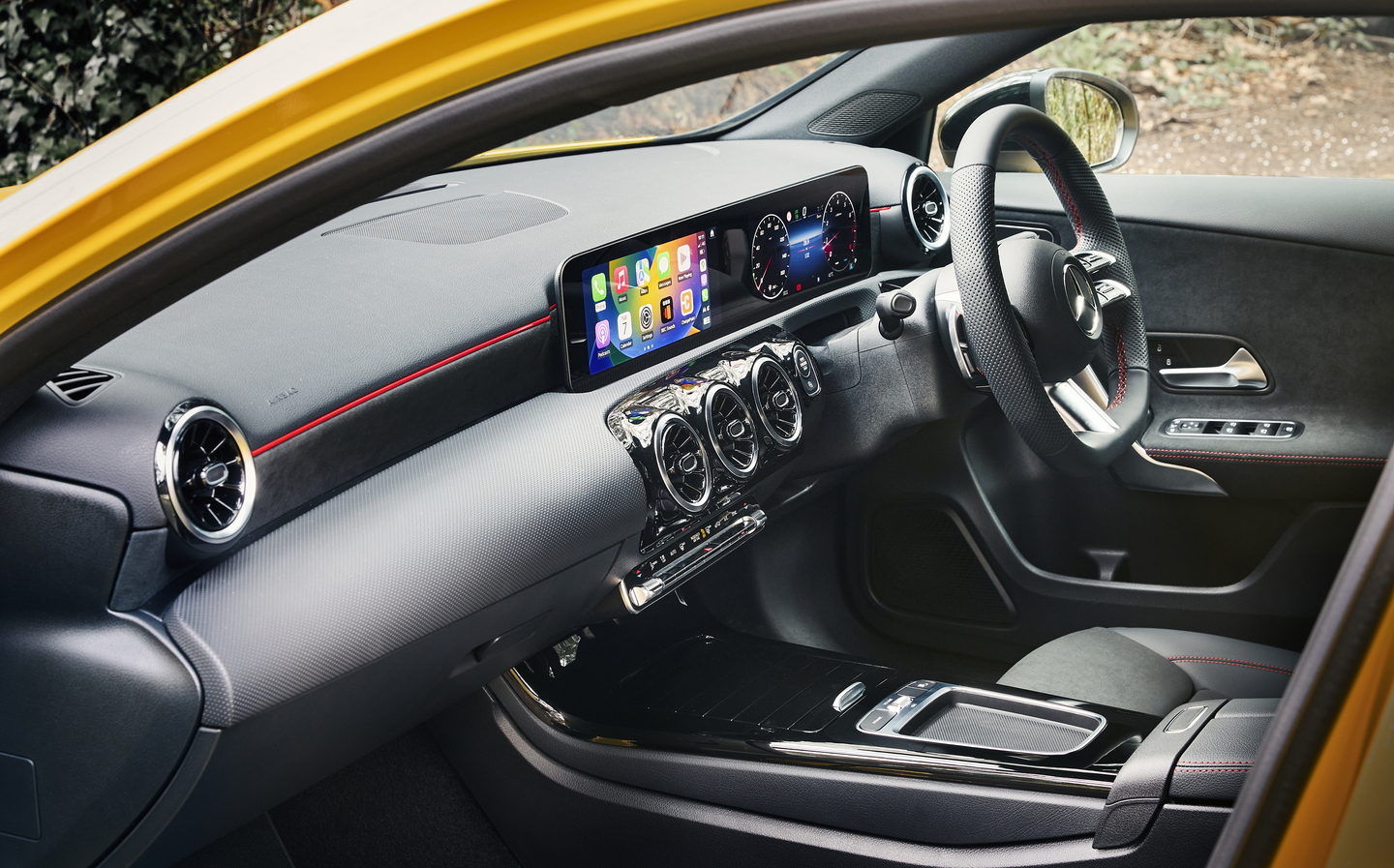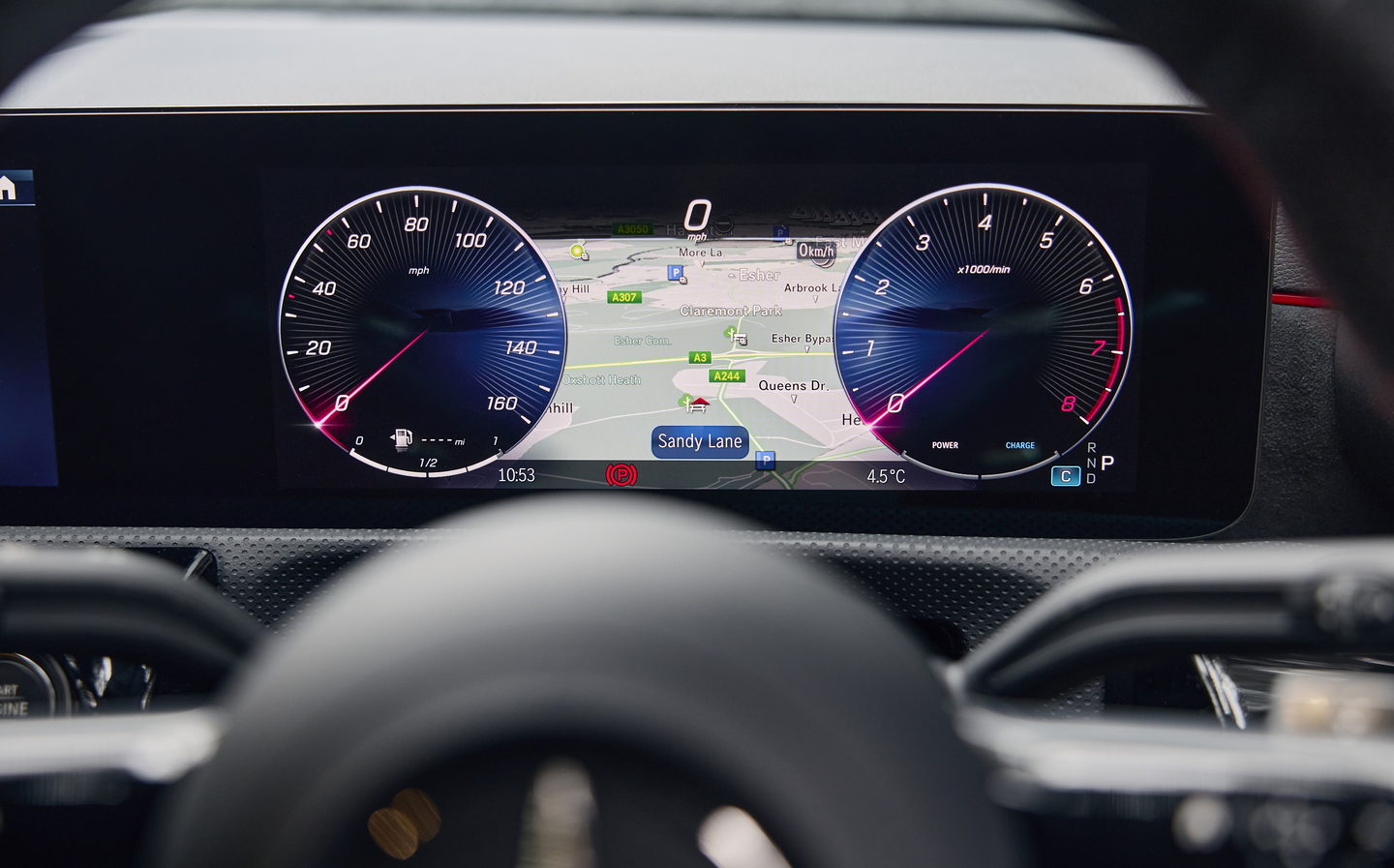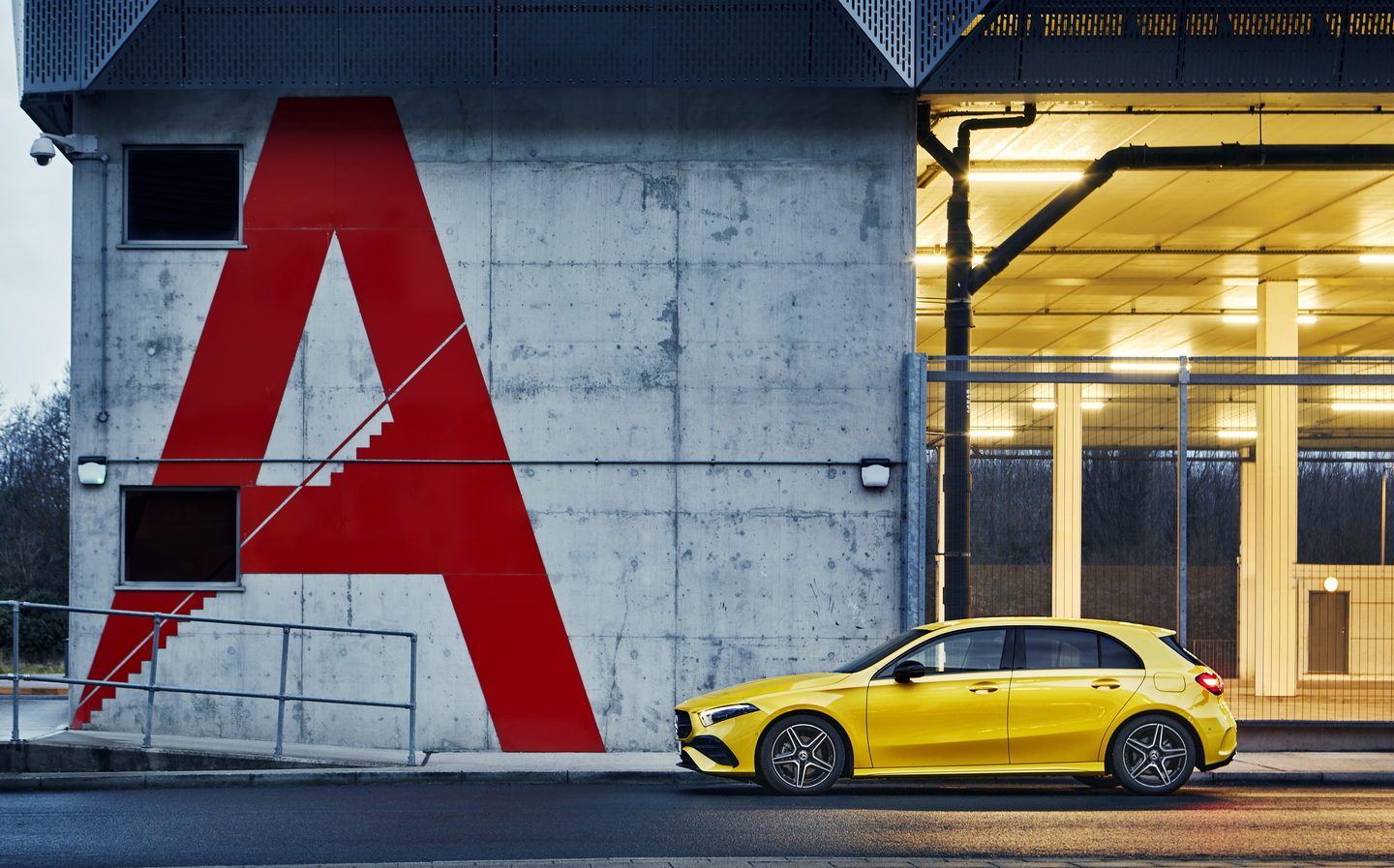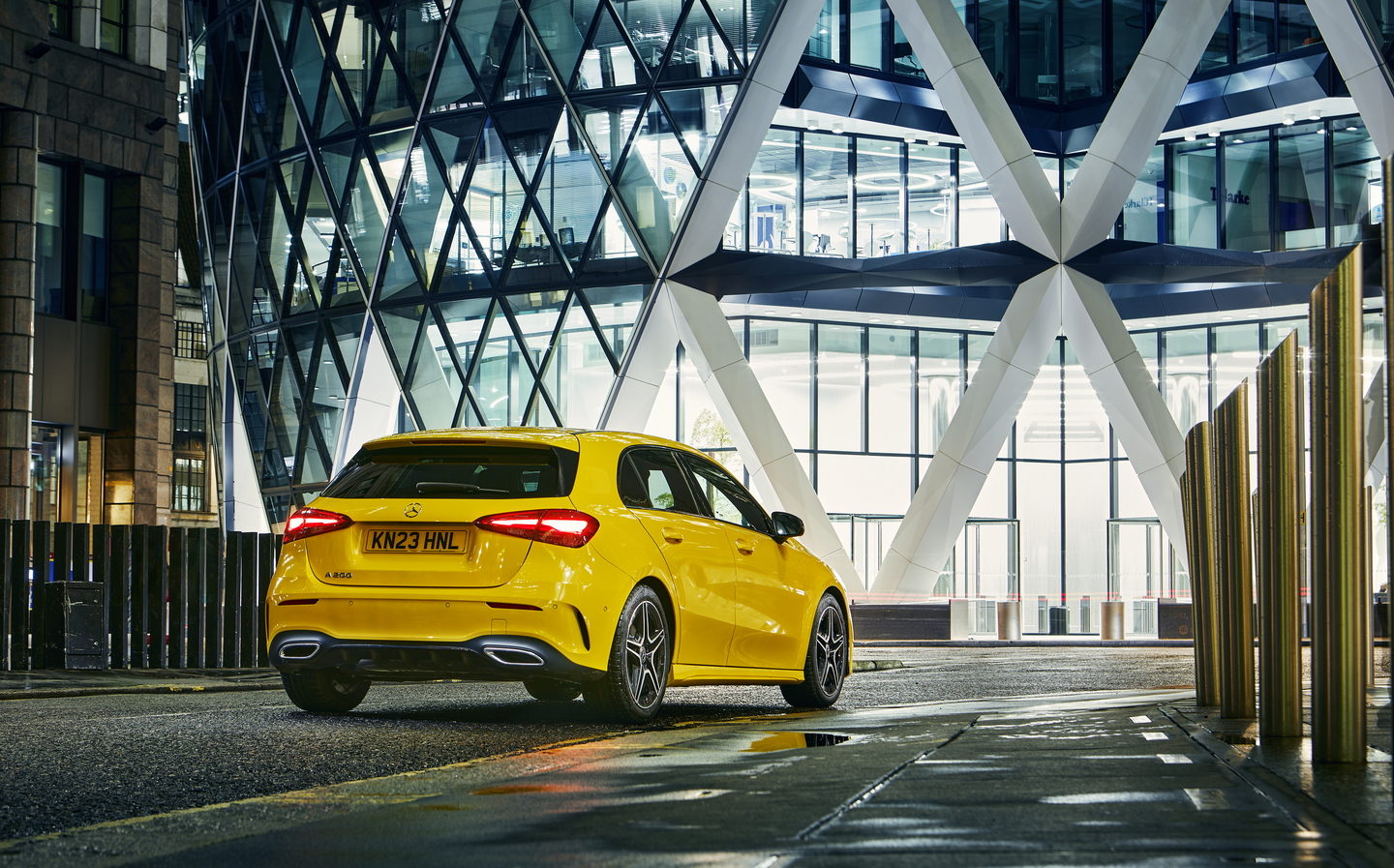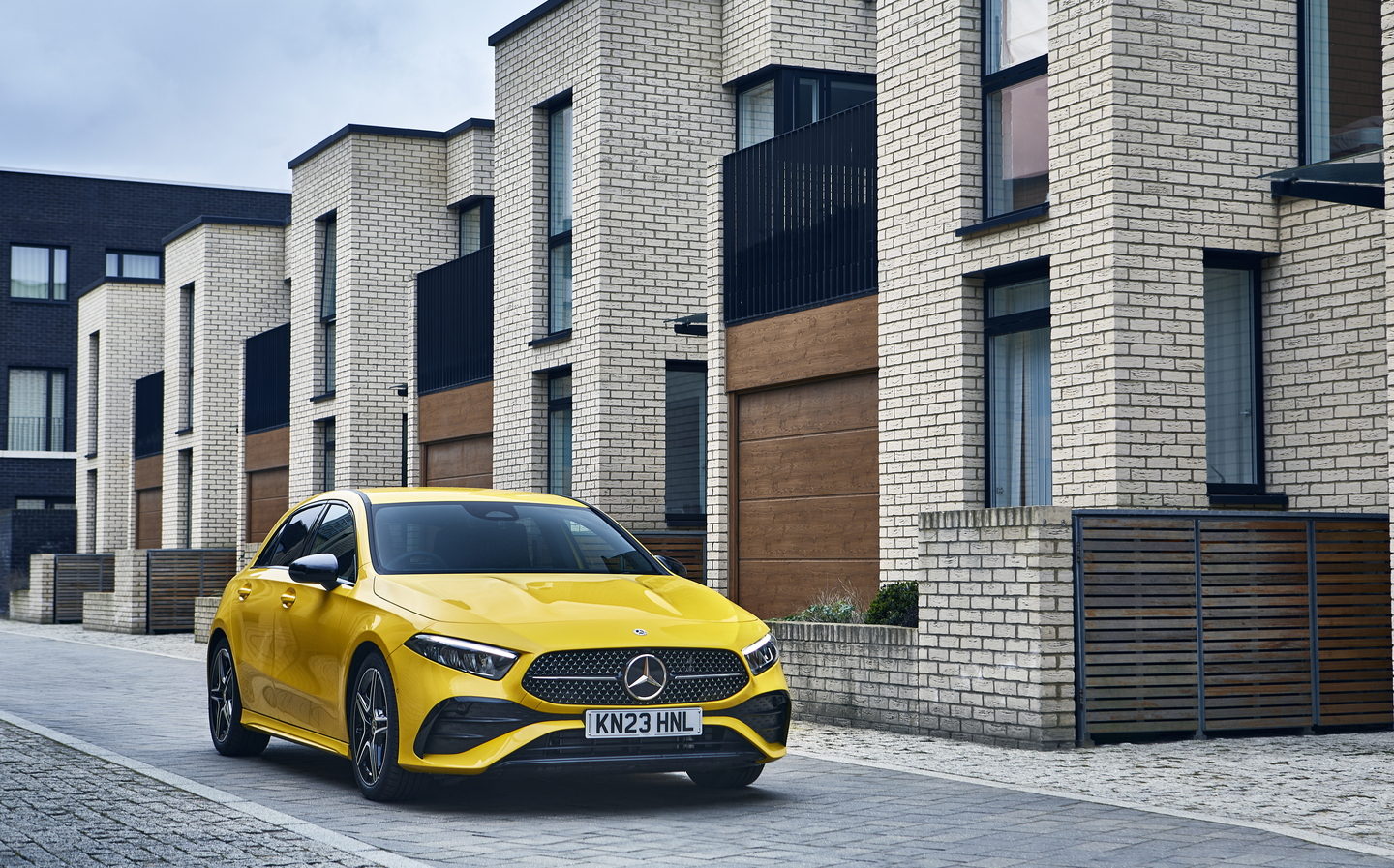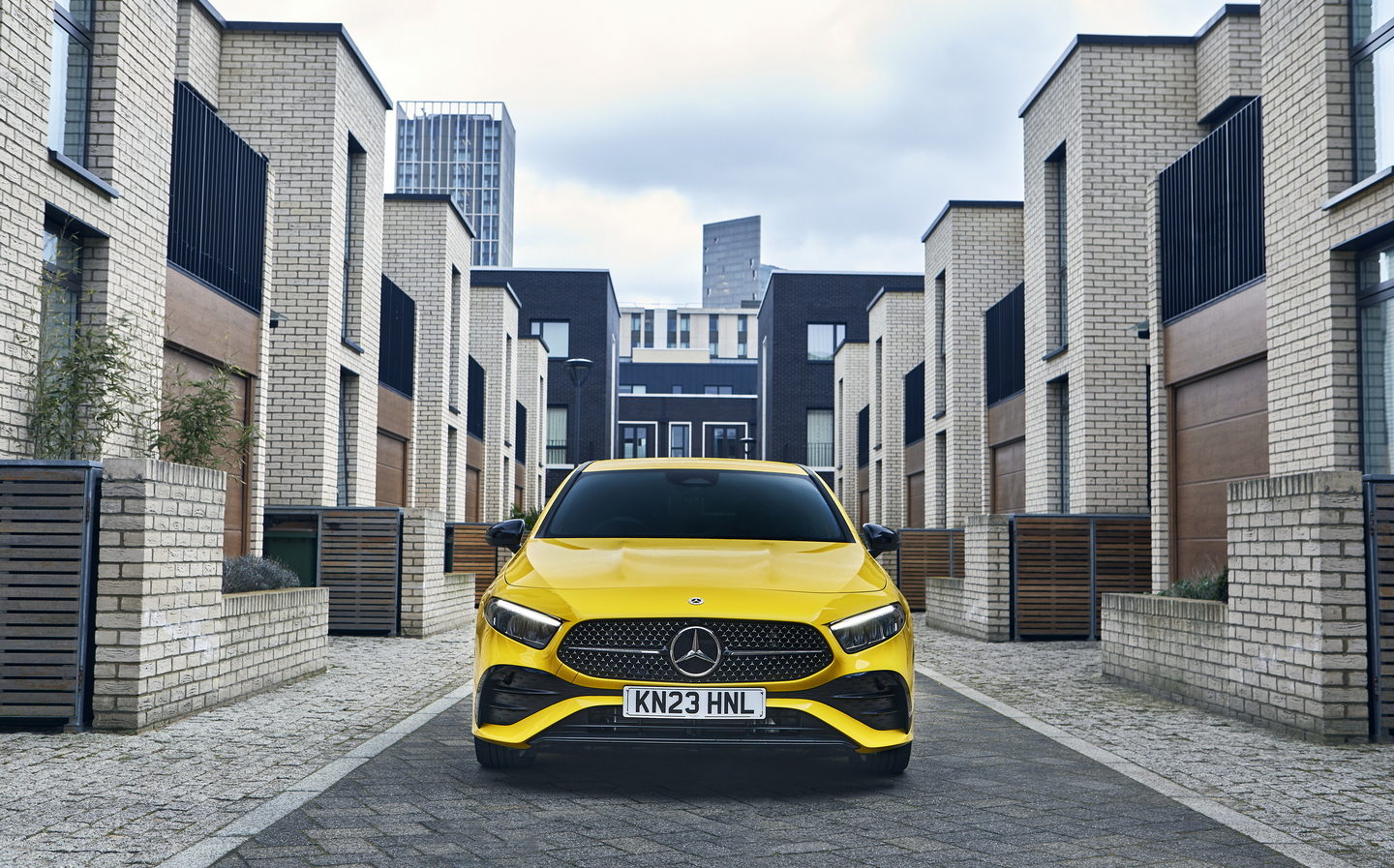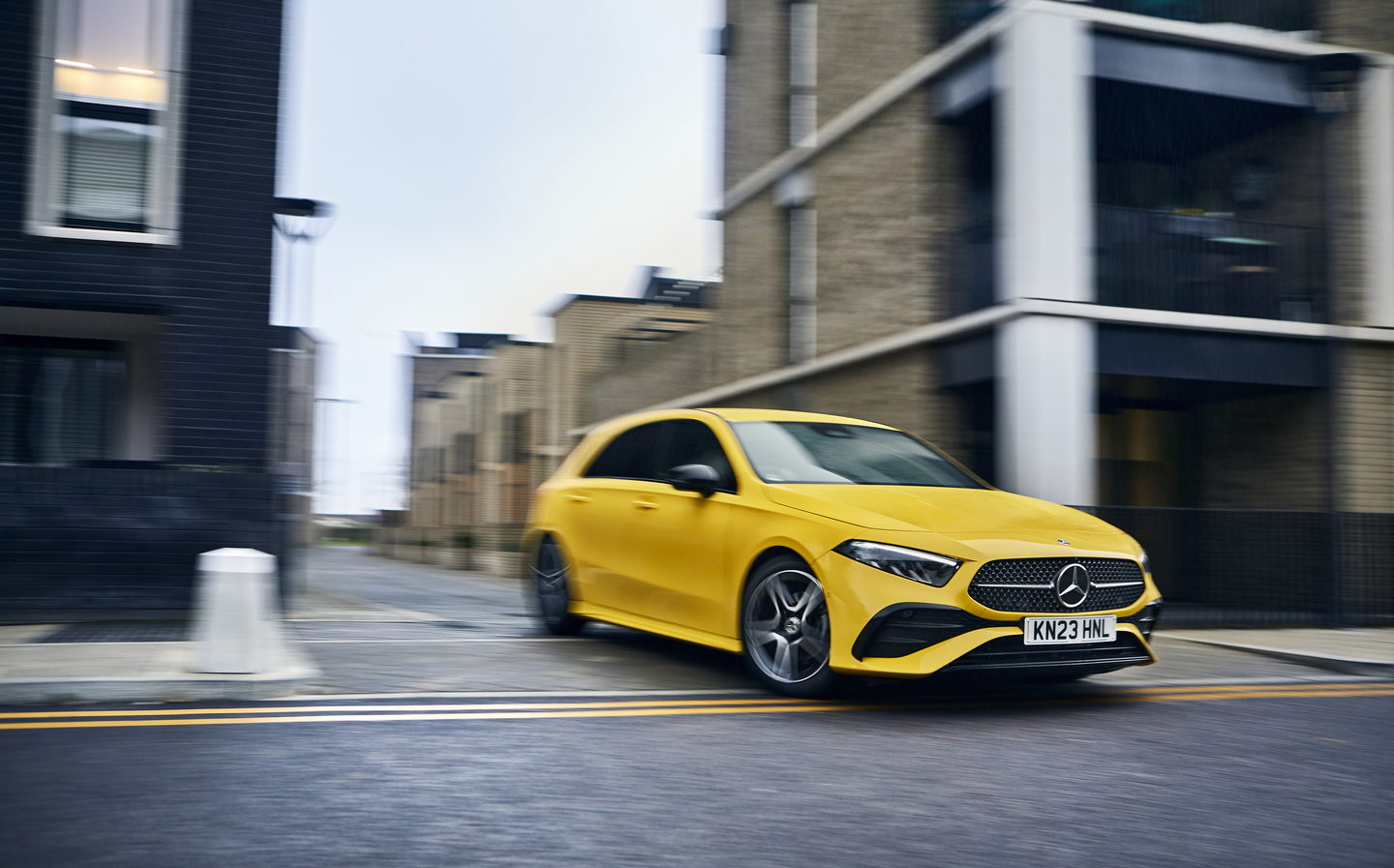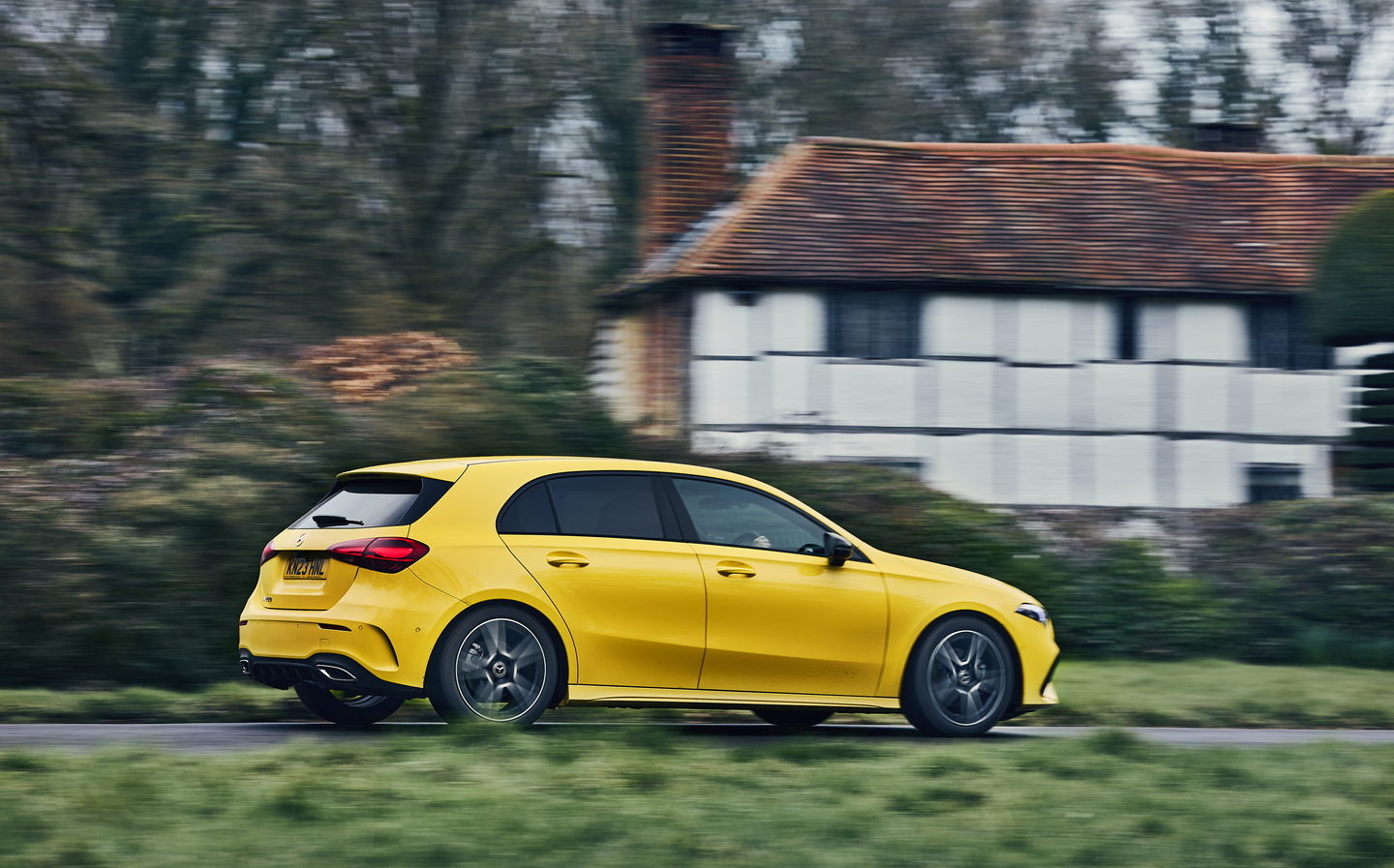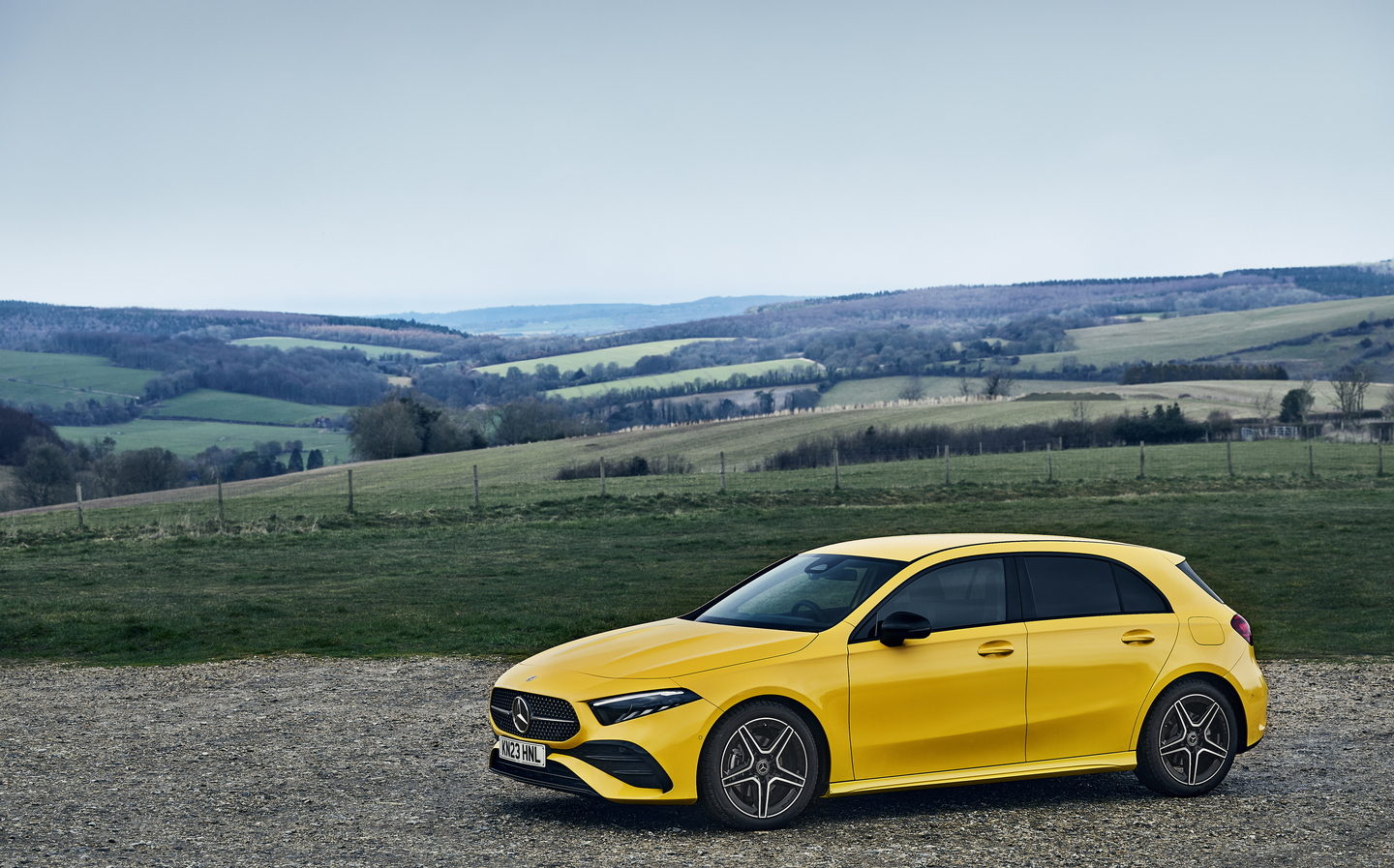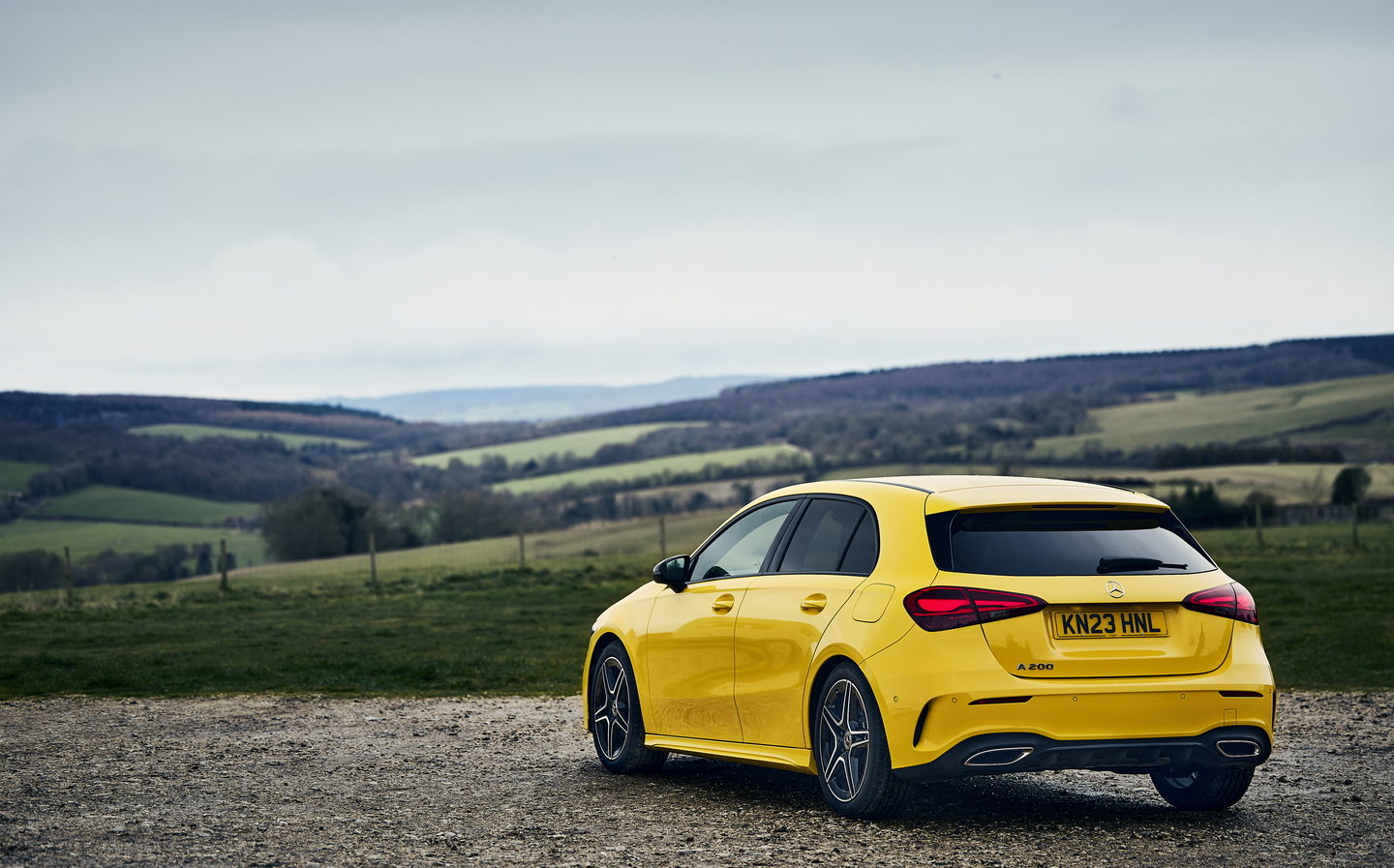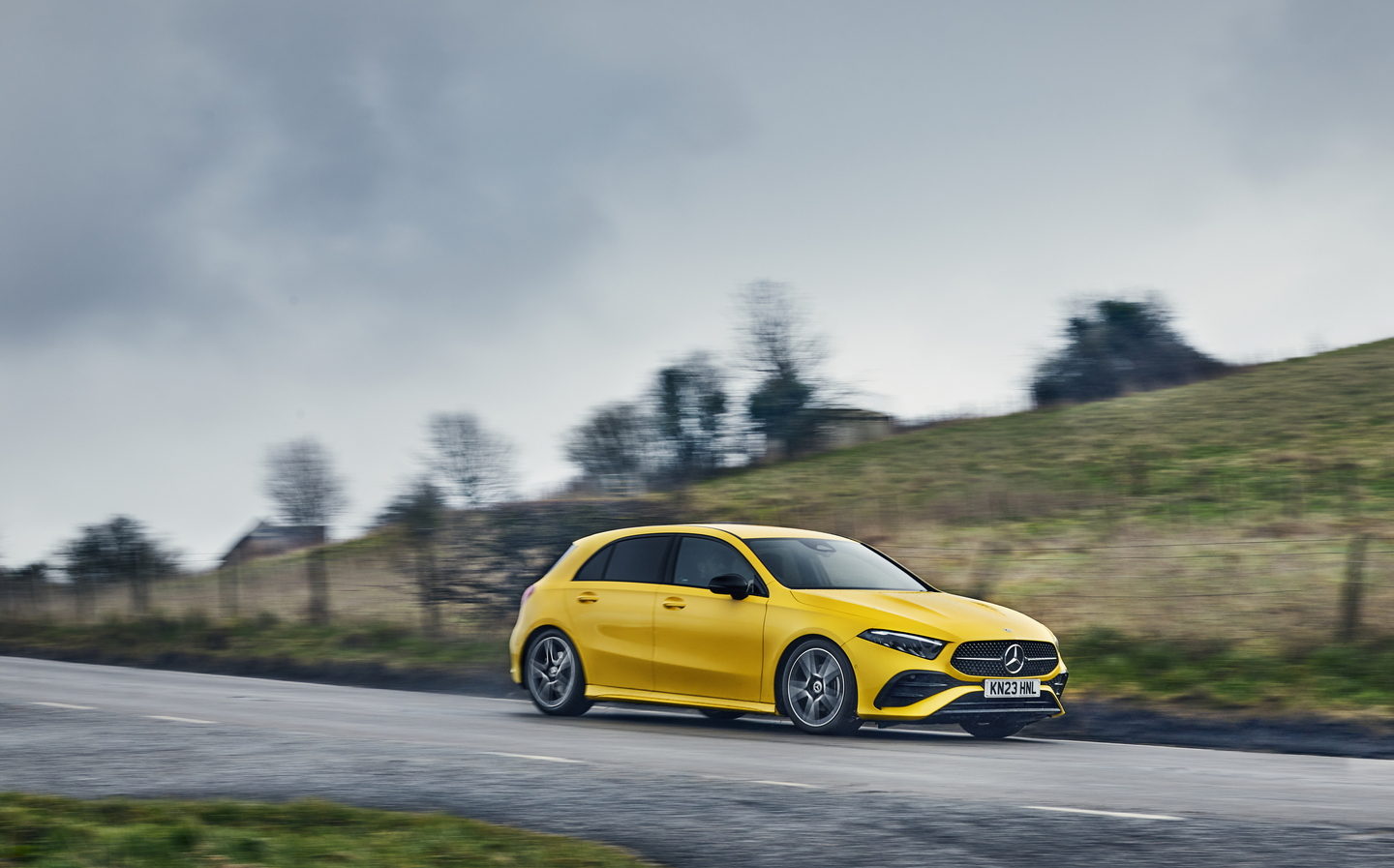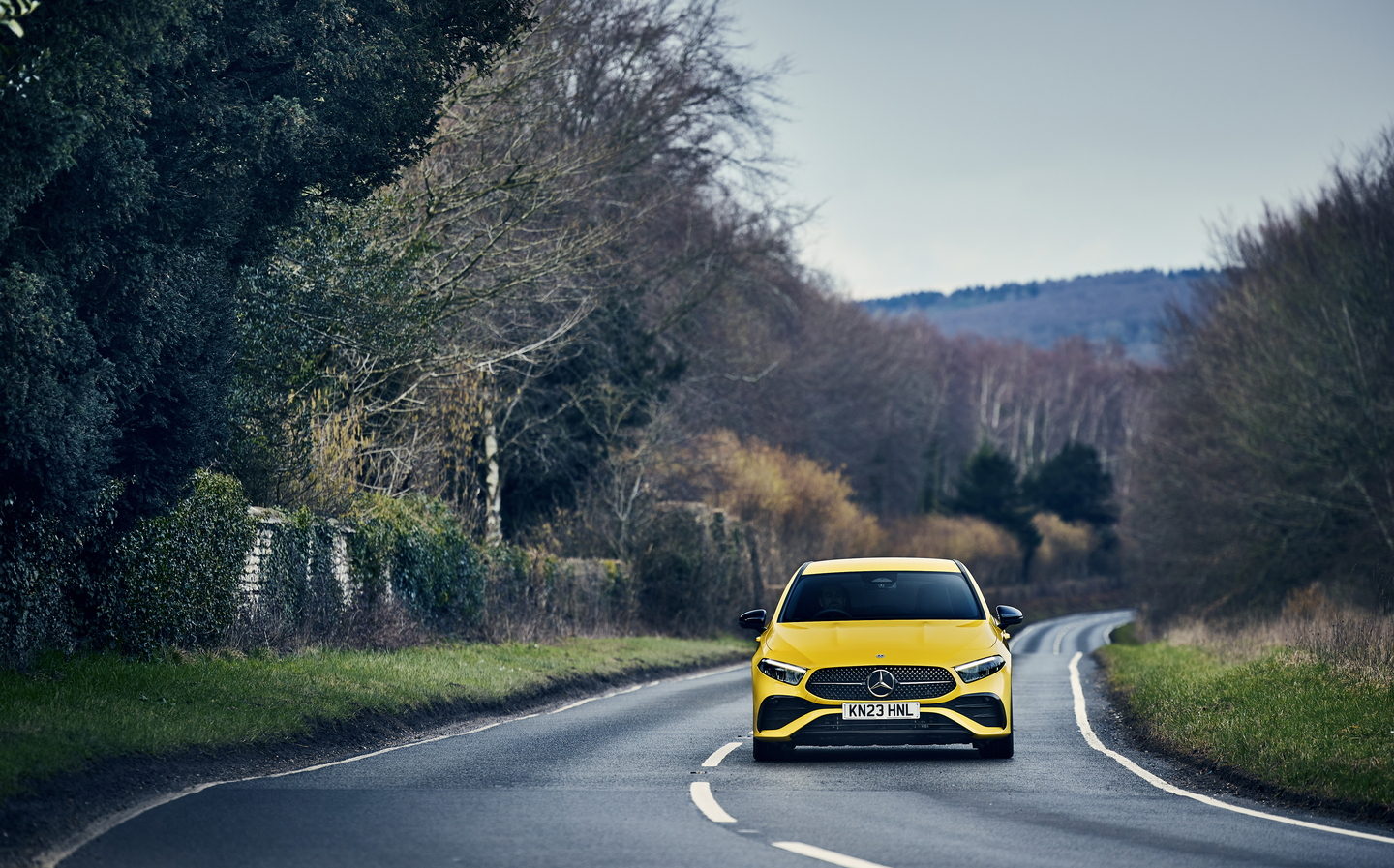Mercedes-Benz A-Class 2023 review: More hybrid power for the Golf rival
Get it while you can
The A-Class has been a mainstay of the Mercedes line-up since the late nineties and evolved into a genuine alternative to the likes of the VW Golf. A best seller in the UK, too. But despite all that, the A-Class could be culled in a couple of years as the firm puts its weight behind more profitable (larger) models, rather than volume sellers.
To keep it going until then the A-Class has received a midlife update, bringing its technology up to date with the rest of the line-up and adding more hybrid assistance to the petrol models.
Exterior design and rivals
As part of the 2023 update to the A-Class, it gets restyled LED lights front and rear, though the overall shapes of the lamps are unchanged. Nonetheless, the technology has been upgraded, with Adaptive Highbeam Assist across the line-up and high-tech Multibeam LED headlights on the AMG Line Premium Plus cars.
Keen-eyed readers will notice a few other tweaks to the front of the A-Class, with slender ‘power bulges’ in the bonnet, slight changes to the lower apron and a new treatment for the internal section of the radiator grille that features a slimmer take on the big Mercedes star badge in the middle, complemented by dozens of tiny three-pointed stars.
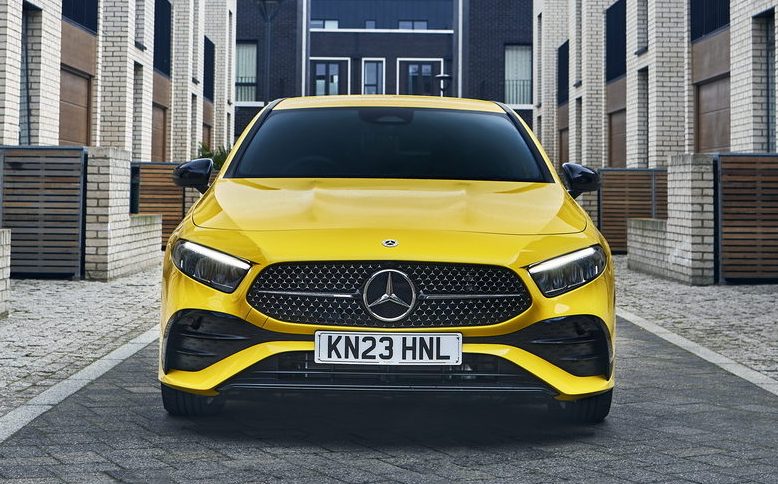
Sport Executive cars sit on modest 17in alloys, the AMG Line Premium Plus version gets 19in wheels and the two full-fat AMG models at the top of the line-up (not to be confused with the AMG Line cars) feature more aggressive styling as before, with their own updates.
Obvious rivals to the A-Class hatchback include the Audi A3, BMW 1 Series and Volkswagen Golf, though buyers might also be tempted to take a look at the DS 4, and perhaps even some of the smaller crossovers and SUVs from premium brands, such as the Lexus UX.
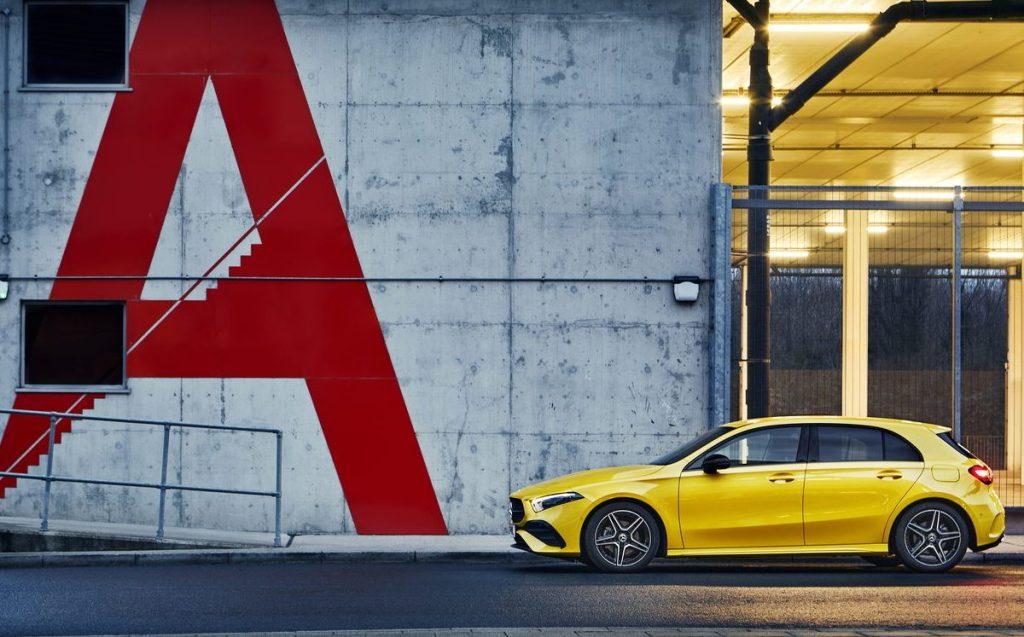
The A-Class Saloon could be seen as a more compact alternative to similarly shaped cars such as the BMW 3 Series and Audi A4, though one of its few direct competitors is the BMW 2 Series Gran Coupé.
Interior and practicality
The cabin of the A-Class has been usefully upgraded. Admittedly, owners are unlikely to spot the new seat upholstery featuring a considerable amount of recycled material, but as the driver it’s hard to miss the new steering wheel.
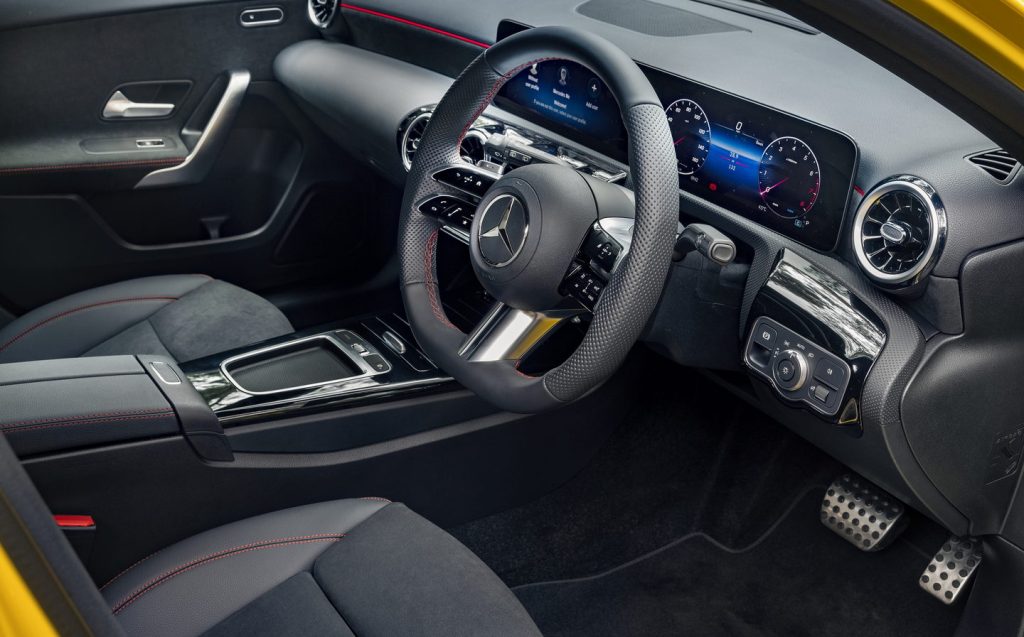
All models get capacitive (touch-sensitive) controls on their steering wheels’ spokes, rather than push buttons. Those on the left operate the infotainment and allow navigation of the central touchscreen without needing to touch it, while those on the right-hand spoke are for the cruise control and altering the digital instrumentation in front of the driver — more on which in the section below. AMG Line cars get a chunkier, flat-bottomed steering wheel.
Before the update, there was a laptop-like trackpad on the centre console surrounded by shortcut buttons to control the infotainment, but that has been pared back and features a button to select the driving modes, a physical volume roller (which many owners will appreciate) and buttons for the exterior camera system.
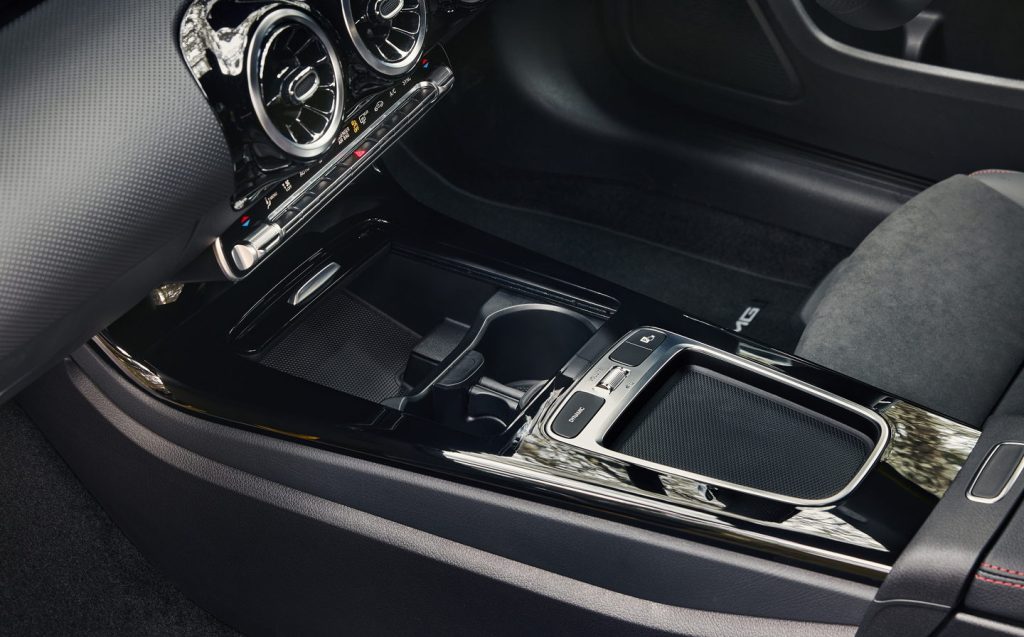
Instead of the trackpad and its associated wrist rest there’s a shallow storage tray behind the cupholders. It’s not very big, but thankfully there’s still a large cubby under a cover ahead of that to house phones and the like.
In terms of boot space, although the capacity has changed in the update it’s worth reiterating that, surprisingly, the A-Class Saloon holds more in its boot – 405 litres in total – than the hatchback does up to its luggage cover (355 litres). However, the hatchback’s tailgate makes it easier to load bulky items in and, if you ditch the luggage cover, the hatch will accommodate up to 435 litres without folding down the split-folding seats.
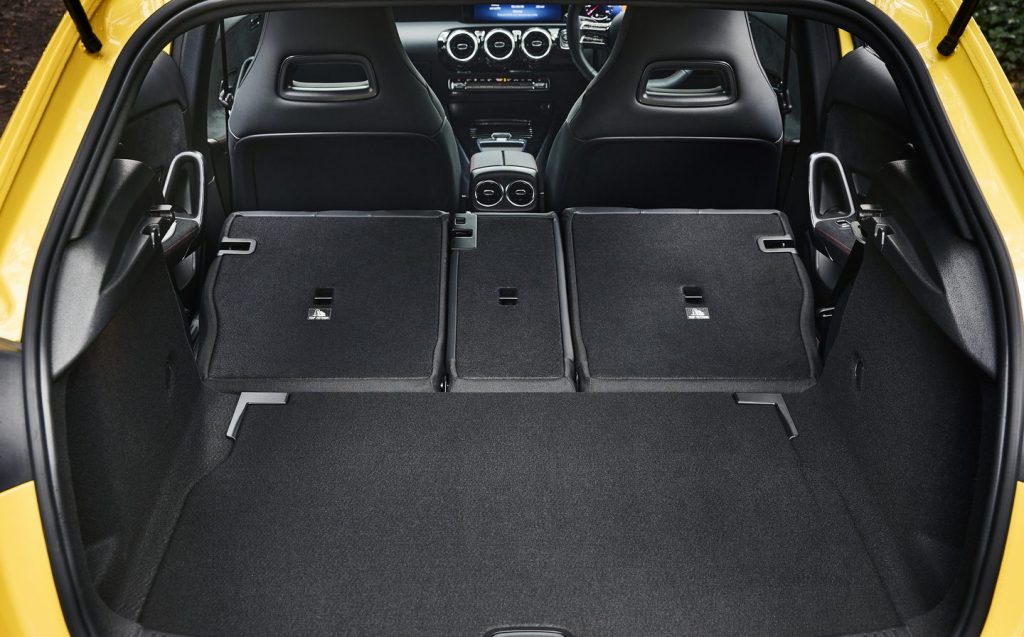
The plug-in hybrid A 250 e Saloon loses space compared with the non-plug-in versions, however, holding just 345 litres of luggage because extra room is needed for the high voltage battery.
Technology and safety
The A-Class now gets two 10.25in screens housed within a single unit as standard — and there have been further updates to the ‘MBUX’ software, allowing the driver to customise the display in front of them — choosing from Classic, Sport or Discreet layouts; Navigation, Assistance or Service modes; and seven different colour schemes.
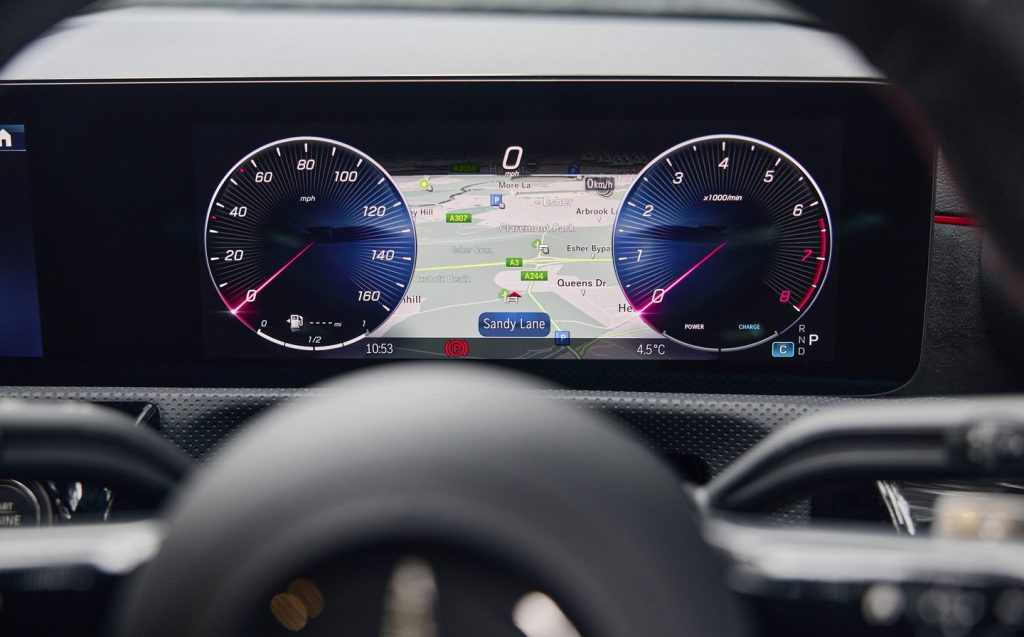
Apple CarPlay and Android Auto are included, the USB charging power has been increased and there’s an extra USB-C port, too. Mercedes also claims that the voice control system has been improved (we found it worked well), while a fingerprint login system – as used in other models such as the S-Class – will soon be available.
Mercedes has subtly enhanced the active safety systems, too, including “more comfortable” intervention by the Lane Keeping Assist feature, which is part of the Driver Assistance Package.
In addition, the Parking Package has been modernised and now supports longitudinal parking and using 3D images in the 360-degree views.
Engines, performance, economy and plug-in electric range
Under the bonnet, the big news is increased electrification in the shape of mild-hybrid assistance for the petrol engines – including those of the AMG-developed A 35 and A 45.
They all get the same 13bhp belt-driven starter-generator and small 48-volt battery, which replaces a conventional starter motor to make starting the car notably quieter and smoother.
The main advantage, though, is in boosting performance, particularly in helping the car move off from standstill with the electric motor giving the engine a helping hand.
Of course, this also has the benefit of improving fuel economy. During braking and decelerating the starter motor is used as a generator, which harvests energy back into both the mild-hybrid battery and the car’s regular 12-volt battery, to be deployed the next time the accelerator is pushed and to power the car’s electrical systems. It’s clever stuff all designed to help you go as far as possible on a tank of fuel.
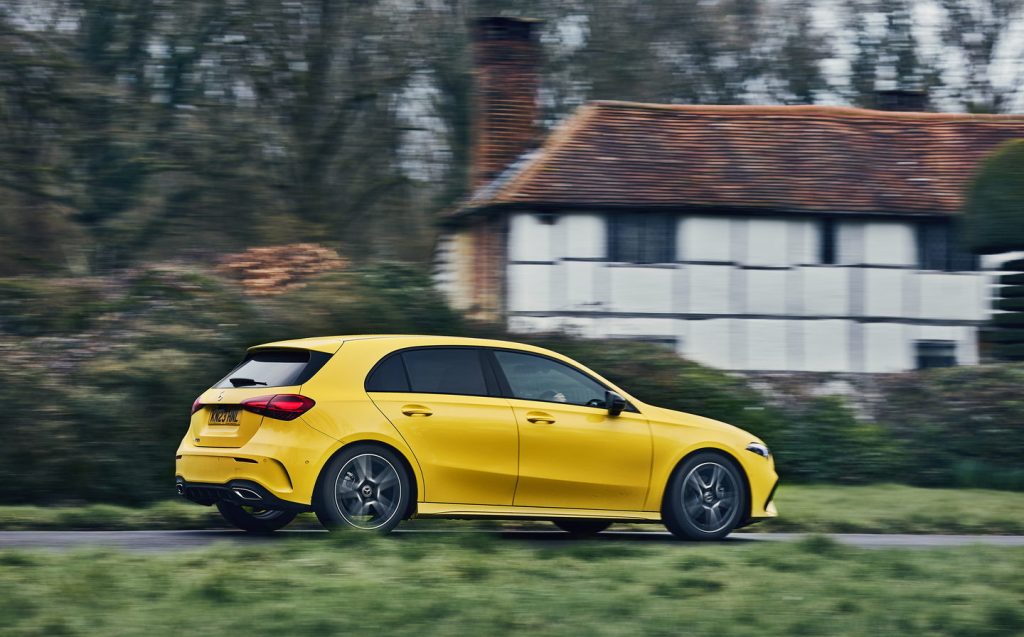
In the A 180 we tested, though the mild-hybrid system clearly does help at urban speeds, the turbocharged 1.3-litre petrol engine felt lacklustre at a faster pace on the open road, and we needed to use every last millimetre of accelerator travel to maintain decent progress.
But while it’s not especially punchy, and we were forced to work it hard, the mild hybrid system still returned 45mpg on a driving route of mixed roads. The engine is commendably quiet and smooth, too, until you extend it to the redline in search of its full 134bhp.
The only other non-AMG petrol option is the A 200, using a more powerful (161bhp) version of the same 1.3-litre engine, while the A 200 d’s 2-litre diesel unit has been unchanged at 148bhp.

If you want more performance, the fastest non-AMG A-Class is the A 250 e — only offered in Saloon format in the UK — managing 0-62mph in 7.4 seconds. That’s the plug-in hybrid, using the more powerful 1.3-litre engine from the A 200 paired with an electric motor.
That motor is rated at 80kW — 5kW higher than before — while more of the drive battery’s capacity has been released for use, resulting in a longer range on purely electric power – up to 51 miles according to official figures.
The recharging capabilities of the A 250 e have been enhanced, too, as it can now take an 11kW AC charge, or up to 22kW on a DC fast charger for 10-80 per cent recharging in 25 minutes.
Ride and handling
All versions of the A-Class use dual-clutch automatic gearboxes and, AMG models aside, power is sent to the front wheels. Little has changed in the update that will affect the ride and handling.
Not that a lot needed changing. Though the entry-level petrol engine doesn’t have the performance to make it an interesting car to drive, it is the lightest model in the line-up and that translates into a pleasing litheness on the road. That’s not to say it’s fidgety or unstable, but that it immediately feels agile and biddable.
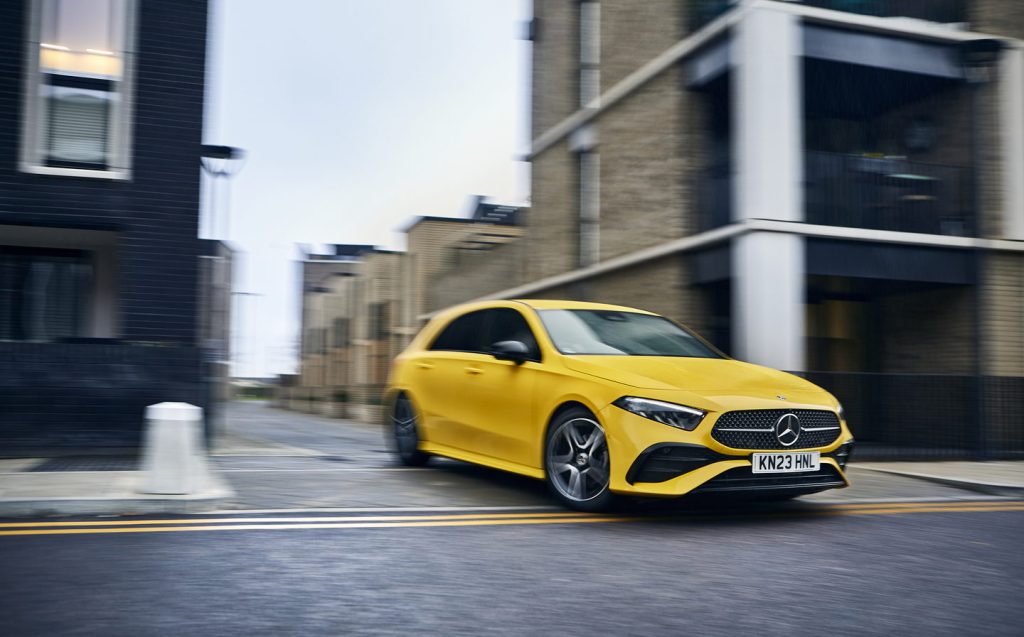
That pays dividends around town, where the A-Class is a cinch to manoeuvre and its relatively compact dimensions allow it flow through traffic and tight spots with ease. Light controls help in that scenario, too.
Out on the open road, though the steering is a little on the light side, there’s plenty of feedback through the wheel and it’s also a notably sharp system, enhancing the feeling of agility through a sequence of corners. The brake pedal feels a little dead at the top of its travel but there’s no doubting the stopping power.
The body stays nicely flat when pushed though that doesn’t seem to be at the expense of ride comfort, as the car’s suspension subtly ebbs and flows with the road surface rather than bash into it uncomfortably.
Our test car rode on 18in alloys so the cheaper Sport models should be more comfortable again with their smaller wheels and higher-profile tyres.
Pricing and on-sale date
On sale in the UK already, the updated A-Class hatchback starts at £31,880 in A 180 Sport Executive guise. The A 200 and A 200 d can also be had in that trim level for £33,430 and £34,500, respectively.
Above that sit the AMG Line Executive, AMG Line Premium and AMG Line Premium Plus specifications and all three engines can be had in those.
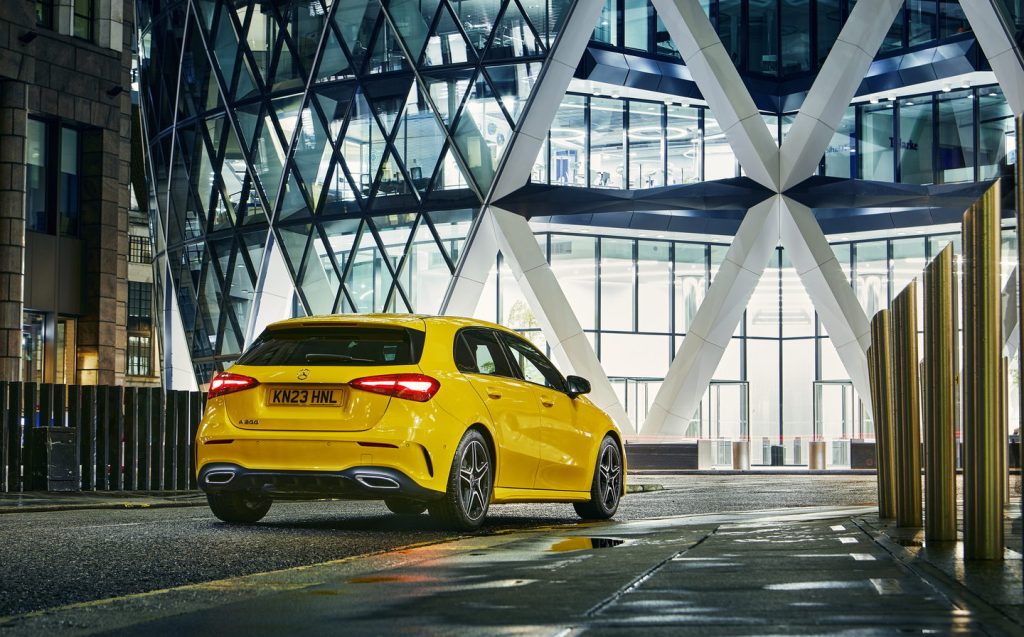
The introduction of the A 200 Exclusive Launch Edition, at £41,480, builds on the AMG Line Premium Plus level with an exterior Night Package, different 19in wheels and a Burmester sound system.
Meanwhile the A-Class Saloon is £595 more expensive across the range where applicable, and it can be had as the plug-in hybrid A 250 e, too (you can’t get the PHEV in hatchback form in the UK). This is only offered with the three AMG Line trims, starting at £41,340.
Verdict: 2023 Mercedes-Benz A-Class review
Whether the A-Class has a future in the Mercedes line-up has yet to be revealed but the updates to the 2023 model are certainly worthwhile – if perhaps a little too subtle to garner the baby Merc any serious attention.
Owners of the existing model will enjoy the upgrades for sure, and the extra electrification of the petrol engines also enhances efficiency, keeping the A-Class relevant as the industry ramps up its move to fully electric. A plug-in hybrid hatchback wouldn’t go amiss though.
Related articles
- After reading our review of the updated Mercedes A-Class, you might like to read a review of the new Vauxhall Astra
- Or, check out the best luxury cars to buy in 2023
- You might also like to read Driving.co.uk’s review of the updated Mercedes B-Class
Latest articles
- Skoda Enyaq 2025 review: Same book, different cover for electric SUV
- Lewis Hamilton wants to design a modern day Ferrari F40 with manual gearbox
- Dacia Bigster 2025 review: The ‘anti-premium’ family SUV that punches above its weight
- Your car’s worn tyres could be being burnt illegally in India, investigation reveals
- Open-top 214mph Aston Martin Vanquish Volante is world’s fastest blow-dry
- F1 2025 calendar and race reports: The new Formula One season as it happens
- Alfa Romeo Junior Ibrida 2025 review: Hybrid power adds an extra string to crossover’s bow
- Top 10 longest-range electric cars: all with over 400 miles per charge (officially)
- Renault 5 Turbo 3E ‘mini supercar’ confirmed with rear in-wheel motors producing 533bhp … and insane levels of torque


